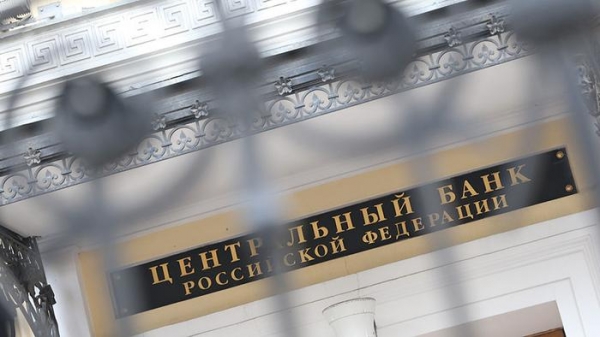
The Russians have become less fearful of the crisis and again started to climb in consumer loans. This trend is disturbing for the head of the Central Bank Elvira Nabiullina. Credit growth will accelerate inflation and will jeopardise the commitment of the Bank to the authorities to curb rising prices.
On the consumer lending market may inflate a new bubble, and it is a concern of the Central Bank. “We are concerned about the risk of rapid growth in unsecured consumer lending”, — said the head of the CBR Elvira Nabiullina last week at the forum “Banks of Russia — XXI century”.
The fact that the banking sector is now experiencing a “surplus liquidity”, in other words, the banks have accumulated extra money, and this provokes bankers on the issuance of high-risk loans. Businesses today prefer not to take loans because of high interest rates. Be only unsuspecting clients — physical persons. According to Nabiullina, in August, the pace of lending grew faster than loans to businesses. With regard to currency revaluation, the increase amounted to 0.8% and 0.2%, respectively.
Consumer lending, in turn, accelerates inflation, which is the concern of the regulator, because the next credit bubble may “slow down the process of reducing inflation”.
Loans and records
The demand for loans on the part of the population is now actually higher than last year, and significantly, reported in VTB24. This state Bank in August issued a record since the beginning of year the volume of loans — 97 billion rubles increased 1.6 times in comparison with August 2015 (61 bn).
Most of all increased consumer loans — 2.2 times, to 31.6 billion For loans to small business, that is actually also the population, 1.7% to 12.6 billion.
“In the whole group VTB (including VTB 24 and Bank-by-Mail) the volume of retail loans amounted to 116 billion rubles,” — said Alexander melenkin was, a member of the Board, Director of the financial Department VTB 24. The higher customer activity, he explains the economic recovery, pent-up demand for loans and reduction of the key rate of the Central Bank.
Among other reasons contributing to the emerging consumption boom, experts called an aggressive advertising campaign of the banks, spot the work of bankers with a “good” borrowers, who survived the second wave of the crisis.
“And even the optimism of the people because of restraint by the authorities of negative points before the elections to the state Duma in response to the credit market”, — said Vitaly Tsvetkov, head of information-analytical Department of ACG “Gradient alpha”.
But in many ways, the growth of lending and income in the banking sector due to the low base, says the expert. “Statistical data compares month-to-month from last year, but then there was a collapse in response to “black Tuesday, 16 December 2014. If you look at the statistics at the longer interval, it becomes obvious that today’s figures significantly exceed last year, but the level of 2013-2014 has not yet been achieved”, — said Tsvetkov.
Nevertheless, the banking sector is gradually returning to pre-crisis values of profit growth. For the first eight months of 2016, according to preliminary estimates of the Central Bank, Russia’s banking sector profit fell 537 billion. this is also at the Sochi forum said the Chairman of the Central Bank Mikhail Sukhov. Thus for all of 2015, Russian banks earned 192 billion. earnings Forecast for the sector this year — more than 700 billion rubles., said Sukhov.
Moderately hard stick
CB is not the first month makes cautionary statements about the growth of unsecured consumer lending and the associated risk of acceleration of inflation. According to Elvira Nabiullina, “the main trends in the economy and in the dynamics of prices yet do not look unambiguous and stable.” For this reason, said the head of the Central Bank, monetary policy of the regulator in the near future will remain “moderately hard and will be in the future.
From this statement of the head of the Central Bank can make two conclusions. The first speaker does not intend in the near future to reduce the key rate.
The second controller may increase the cooling mechanisms of the market of consumer crediting.
September 16 regular meeting of the Central Bank. Market participants, experts and even officials are waiting for lower rates, assessing such a prospect as is possible. “It will be quite funny if it (the rate cut. — “Газета.Ru” not to do now. It was time for a long time. And now, well, just kind of anecdotal situation,” — said East economic forum in Vladivostok the Minister of economic development Alexei Ulyukayev.
The speaker meant that the Central Bank would be funny, if the background of lower inflation will not reduce the key rate and will not enable businesses and citizens to borrow at reduced rates. In August, according to Rosstat, inflation amounted to 0% after 0.5% in July. In January — August 2016, inflation in Russia amounted to 3.9% vs. 9.8% in January — August, 2015 (including in August 2015 is 0.4%).
In annual terms inflation in August 2016 fell to 6.9% from 7.2% in July.
Thus, inflation in annual terms by 3.6 p. p. less Central Bank’s key rate is now 10.5 per cent.
Central Bank aims to reduce inflation to 4%. And inflation of 6-7% calls investment unattractive. By the way, Elvira is initially planned to reach 4% by early 2017, but later the benchmark was adjusted — inflation will have to fall to this value at the end of 2017. But if the meeting in September, the Central Bank will lower its key rate to at least half a percent, the ruble weakened, and the inflation target is likely to be reached even adjusted for the whole year to date.
“When the head of the Central Bank says about the risks of inflation, she says about risk is not for the economy as a whole, we are talking primarily about the risk to the Central Bank, had pledged to hold the growth of prices”, — says Yuri Kravchenko, senior analyst of investment company “Veles Capital”.
The speech by the head of the Central Bank in the banking forum markedly diminished hopes for a reduction of the key rate. The rostrum of the forum, Nabiullina used in order to give a clear signal to the market.
Other signals to 16 September from the regulator will not be — began the so-called week of silence, when the Central Bank refrained from any comments about interest rate policy.
Pinch consumers
The second message is less obvious, experts say. In April and June, the Central Bank said it sees risks of inflation due to the growth of unsecured consumer loans. But the real steps to cool the market did not take. “At the end of August, the Central Bank could move to take decisive action,” — says Kravchenko from Veles Capital.”
“In the coming months, we expect the transition to structural surplus of liquidity,” — said Nabiullina. According to her, the timing of the transition to the structural surplus liquidity depend primarily on the intensity of an expenditure of means of the Federal budget. However, due to the surplus is virtually automatic monetary easing. “The key rate becomes a benchmark for rates of placement of funds, not interest rates to attract funds. This changing role of the key rate, in fact, equivalent to decline,” she said.
“Other things being equal in a structural surplus, the key rate should be slightly higher than with structural lack of liquidity to ensure an equivalent impact on inflation and inflation expectations,” — said the head of the Central Bank.
However, if the Central Bank decides that the time has now come to start a fight with consumer credit, and excess liquidity in the banking system, the disposal of the controller there are a variety of mechanisms. For example, through Deposit auctions.
By the way, to the latter the regulator has resorted in August of this year. Instead of providing funds to banks in the framework of regular repo auction, the Central Bank has attracted 100 billion rubles for a one-week deposits at an average rate of 10.22%. The regulator has resorted to a new measure after having already started to sell Federal loan bonds from its portfolio against the background of the first since 2011, the excess liquidity in the banking industry, wrote Bloomberg.
Deposit auctions included in the Arsenal of tools that allow the regulator to control money market rates, Nabiullina said earlier. According to her, the regulator can also start to issue its own short-term bonds.
“In addition, it is possible to introduce higher reserve ratio for banks, whose growth performance for the reporting period exceed a certain percentage. Securities will not be difficult to hold down consumer demand”, — concludes the Flowers of Gradient alpha.








